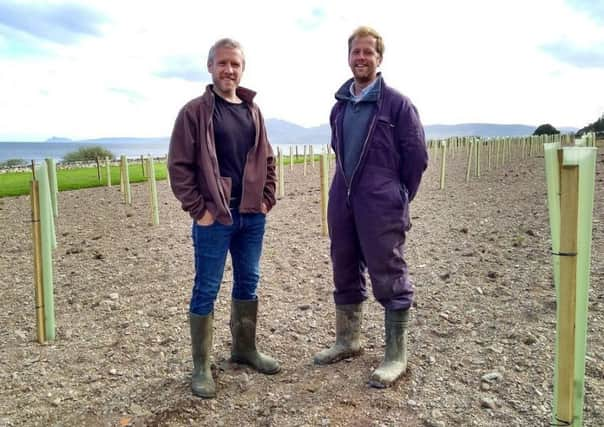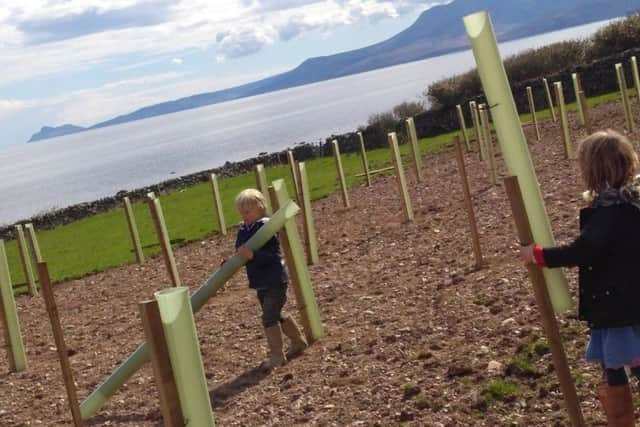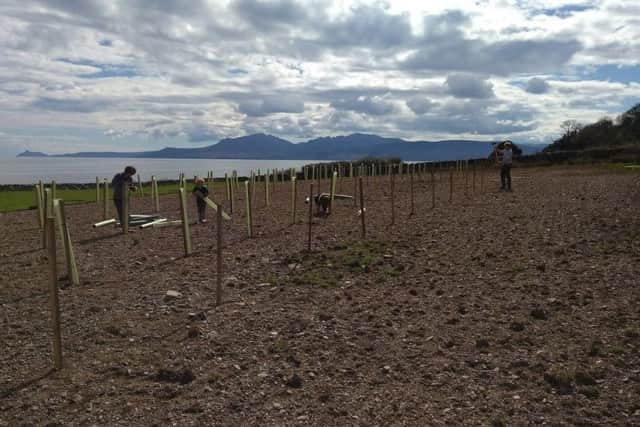Bute's first truffle farm


Truffles are a type of fungi that grow on the root system of living trees. They help the tree to grow and the tree helps the fungus. Once the fungus is attached and growing on the root system, they are nurtured for a year before the trees are planted into carefully prepared field sites.
Bute resident Dr Paul Thomas made history three years ago when he cultivated the first truffles in Britain, in Leicestershire.
Advertisement
Hide AdAdvertisement
Hide AdNow he has created a plantation at Scalpsie Farm in partnership with farmer Ian Dickson.


Dr Thomas said: “It’s 300 trees. So quite small compared to other plantations, but still pretty decent. It’s native trees, oak and hazel.
“We planted summer and autumn truffles, and also the experimental perigord - which is worth £1,000 a kilo.
“It will definitely produce the summer truffles at least.
“It’s also good as we are re-establishing woodland there.


“It’s very exciting. I think we are the first plantation on a Scottish island.
“On a decent plantation on a hectare, much bigger than this plantation, you can yield £20,000 a year. But it takes six years to start producing.
“On this one it will make a few thousand pounds a year. Enough to help promote the island. And we can expand the plantation further.”
Mycorrhizal Systems Ltd (MSL) was incorporated in 2005 with grant support to commercialise technology developed by Dr Thomas for the cultivation of truffles.
He said: “We have about 30 plantations now. I think the one on Bute is the prettiest one we have got. The backdrop is stunning. We’ve been here for four years now, it’s home. Our youngest daughter was born here. We are here to stay.
Advertisement
Hide AdAdvertisement
Hide Ad“We do plantations in partnership with landowners and farmers. I do tests and if the site is suitable we do a partnership approach. Like a co-op.
“Everyone meets once a year. It’s a good way to grow the industry in the UK. So we are all doing it right.
“It’s been a bit of a labour of love. I always wanted to forage as a kid and I got really involved in fungi.
“It’s just amazing. I find the science side of it totally intriguing.”
Truffle cultivation can be a very profitable pursuit but the approach must be informed and tailored to each site. MSL run a partnership programme whereby they work in partnership with landowners and farmers to cultivate truffles on their land.
Truffles, the rare gourmet fungi, grow on the roots of oak and hazel trees and require very specific treatment in order to fruit successfully. “We put limescale in the soil, truffles need quite an alkaline soil, so we need to add that,” added Dr Thomas.
Wild truffles were once fairly common in Britain, but the loss of most of the country’s ancient woodland, compounded by modern farming methods, means truffles are now extremely rare.
It appears Dr Thomas’s work to re-establish the trade has not gone unnoticed across the UK. Presenting at international conferences and often in the media, MSL has secured a global reputation, thanks to UK collaborations including with Cambridge university, University of Stirling, where Dr Thomas is also a research associate, and the University of East Anglia.
Advertisement
Hide AdAdvertisement
Hide AdHe said: “We do quite a bit of press and get contacted from time to time.
“We did a 22 minute piece on Radio Four recently. We get contacted quite often by journalists who want to follow the truffle trade in the UK.”